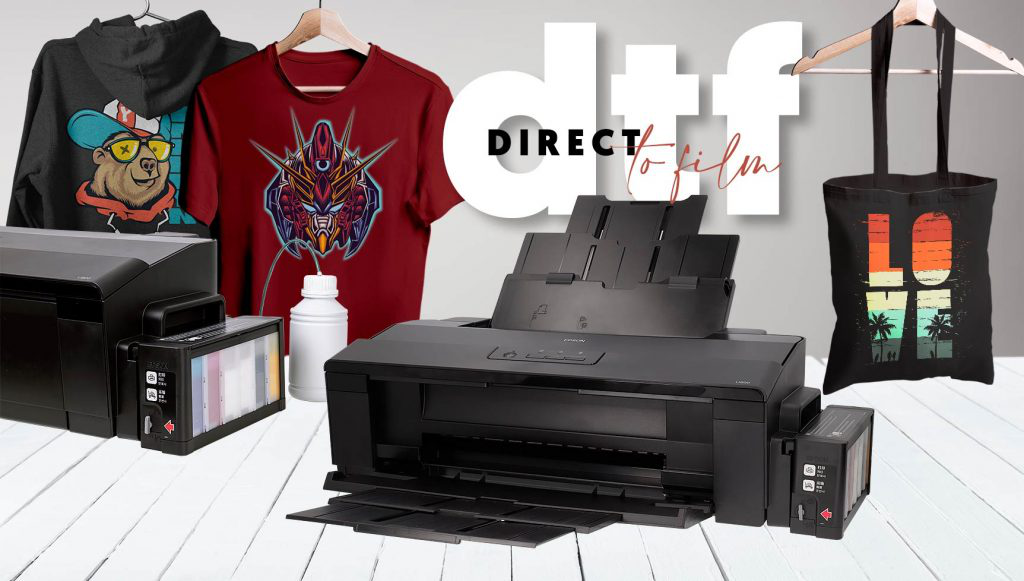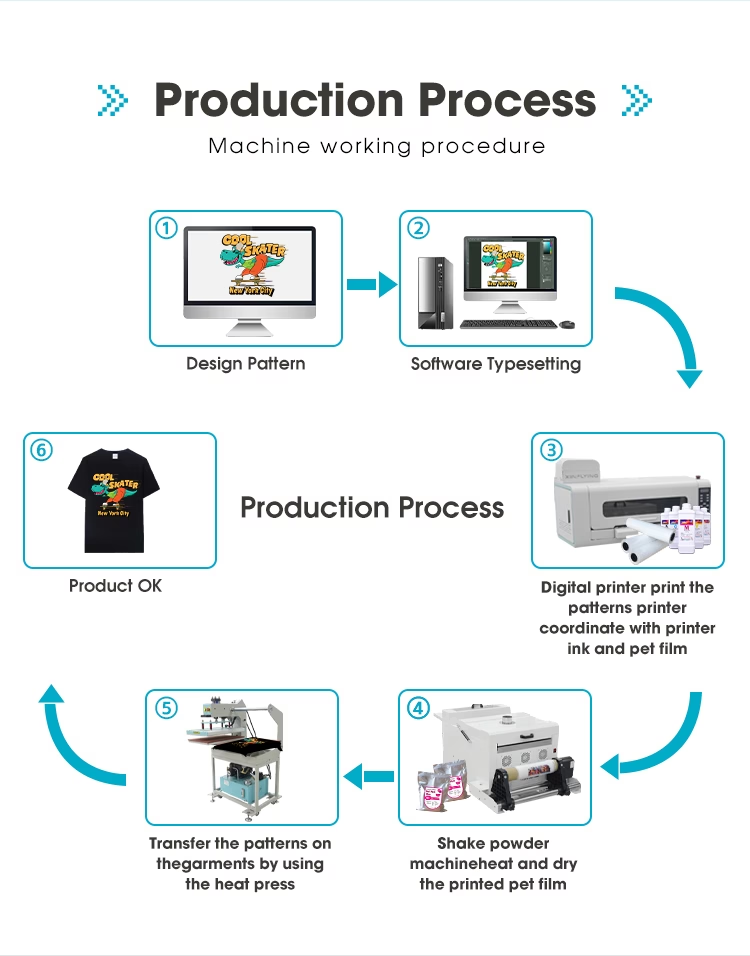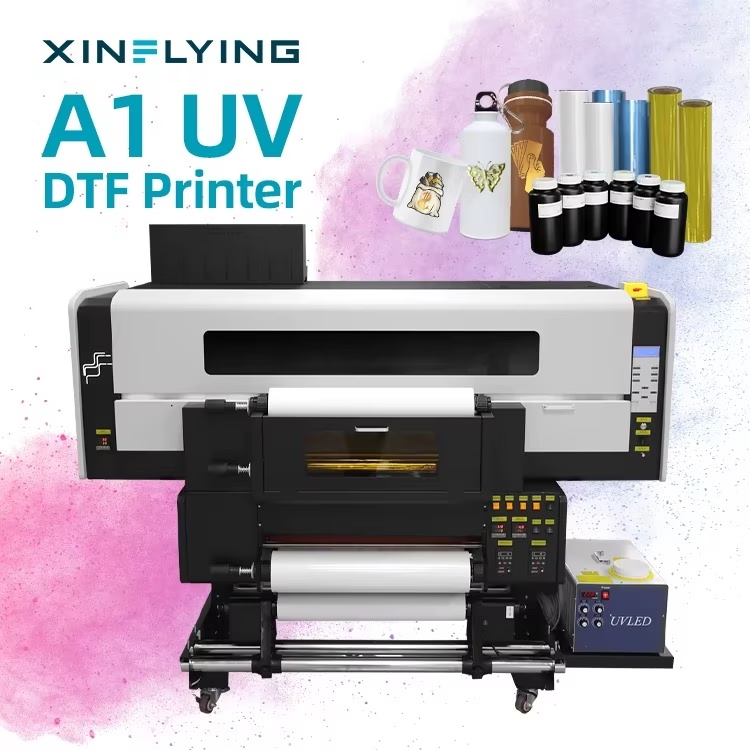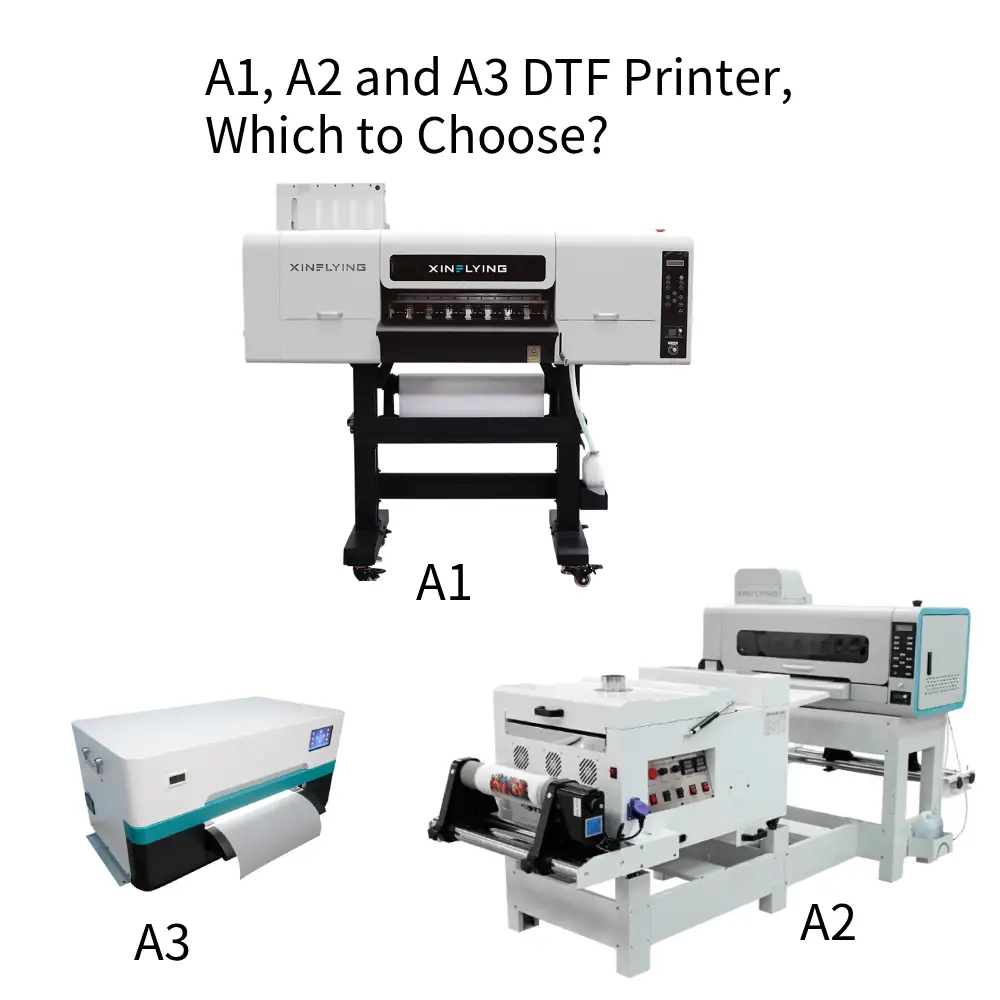
Quelle: https://www.silhouetteschoolblog.com
Der Digitaldruck hat die Bekleidungs- und Textilindustrie revolutioniert, Wir bieten Unternehmen die Möglichkeit, problemlos hochwertige und maßgeschneiderte Produkte herzustellen.
DTF-Druck und Sublimationsdruck sind zwei beliebte Digitaldruckverfahren, die weit verbreitet sind. Dabei bieten beide Technologien mehrere Vorteile, Es gibt erhebliche Unterschiede zwischen den beiden.
In diesem Artikel, wir werden vergleichenDTF-Drucking UndSublimationsdrucking und entdecken Sie ihre Vorteile, Einschränkungen, und Eignung für unterschiedliche Druckanforderungen.
Wir schlüsseln alles auf eine super bekömmliche Art und Weise auf, So können Sie endlich sicher die Digitaldruckmethode wählen, die am besten zu Ihren Geschäftsanforderungen passt. Egal, ob Sie ein Kleinunternehmen oder ein Großhersteller sind, Dieser Artikel hilft Ihnen dabei, die richtige Wahl für Ihre Druckanforderungen zu treffen.
[Tisch] Was sind die Unterschiede zwischen DTF-Druck und Sublimationsdruck??
| Vergleich | DTF-Druck | Sublimationsdruck |
| Arbeitsablauf | 1. Design am Computer 2. Drucken Sie auf die PET-Folie 3. Tinte mit Klebepulver aushärten 4. Hitzepresse zum Übertragen des Designs | 1. Design am Computer 2. Drucken Sie auf dem Sublimationspapier 3. Hitzepresse zum Übertragen des Designs |
| Material | Eine größere Auswahl an Stoffen, einschließlich Baumwolle, Polyester, und Mischungen | Polyester oder mit Polyester beschichtete Materialien, einschließlich Bekleidung, Banner, und Werbeartikel. |
| Druckqualität | Hochwertige und detaillierte Drucke, lebendigere und detailliertere Drucke | Hochwertige und detaillierte Drucke |
| Produktionseffizienz | Kürzere Durchlaufzeiten und effizientere Produktion | Geeignet für kleine Mengen |
| Kosten | Teuer | Teuer, aber erschwinglich für kleine Mengen individueller Produkte |
Vergleichstabelle zwischen DTF und Sublimation
Was ist DTF-Druck??

Quelle: https://www.brildor.com
DTF (Direkt zum Film) Drucken ist eine digitale Drucktechnologie Dadurch können hochwertige und detaillierte Designs direkt auf Transferfolie gedruckt werden, Mit dieser lässt sich das Motiv dann auf den Stoff übertragen.
Der DTF-Druck ähnelt dem DTG (Direkt zum Kleidungsstück) Drucken, aber anstatt direkt auf den Stoff zu drucken, Das Design wird auf Transferfolie gedruckt, die dann mit einer Heißpresse auf den Stoff aufgetragen wird.
Wie funktioniert der DTF-Druck??
Die DTF-Drucktechnologie verwendet einen speziellen Drucker, der mit speziellen Druckern auf Transferfolien drucken kann DTF-TinteS. Der Drucker trägt die Tinte auf die Transferfolie auf, die dann mit einer Schicht aus beschichtet wird DTF-Pulver.
Der DTF-Film wird dann auf den Stoff gelegt und mit einer Heißpresse aufgetragen. Die Hitze schmilzt das DTF-Pulver, Dadurch wird die Tinte auf den Stofffasern fixiert, Dies führt zu einem hochwertigen und langlebigen Druck.
Vorteile des DTF-Drucks
Der DTF-Druck bietet gegenüber dem herkömmlichen Druck mehrere VorteileSublimationsdruck Methoden, einschließlich:
- Der DTF-Druck bietet die Möglichkeit, auf einer Vielzahl von Stoffen zu drucken, einschließlich Baumwolle, Polyester, und Mischungen.
- Es erzeugt lebendige und detaillierte Drucke, die langlebig und beständig gegen Ausbleichen und Waschen sind.
- Der DTF-Druck bietet im Vergleich zu herkömmlichen Sublimationsdruckverfahren schnellere Durchlaufzeiten und eine effizientere Produktion.
- Der DTF-Druck bietet die Möglichkeit, eine größere Produktpalette zu bedrucken, inklusive Schuhe, Hüte, und Taschen.
Einschränkungen des DTF-Drucks
Dabei vielseitig, Für DTF gelten die folgenden Einschränkungen:
- Begrenzte Untergrundkompatibilität – Der DTF-Druck funktioniert am besten auf bestimmten Stoffen wie Baumwolle, Polyester, und Baumwoll-Polyester-Mischungen. Auf einigen anderen Materialien wie Nylon oder Leder kann es sein, dass es nicht gut haftet oder die gewünschten Ergebnisse liefert.
- Es kann zu Rissen oder Ausbleichen kommen;
- Für helle Stoffe ist eine weiße Unterlage erforderlich;
- Nicht ideal für große Bestellmengen;
- Begrenzte Dehnbarkeit.
Was ist Sublimationsdruck??

Quelle: https://www.allprintheads.com
Beim Sublimationsdruck handelt es sich um ein digitales Druckverfahren Dabei wird Hitze und Druck eingesetzt, um Farbstoff auf ein Material zu übertragen, typischerweise Polyester oder mit Polyester beschichtete Produkte.
Der Prozess beinhaltet das Drucken des Designs auf Sublimationspapier mit speziellen VerfahrenSublimationstinteS, die dann mit einer Heißpresse auf das Material übertragen werden.
Wie funktioniert Sublimationsdruck??
Beim Sublimationsdruck wird die Tinte mithilfe von Wärme in ein Gas umgewandelt, das sich dann mit den Fasern des Materials verbindet. Durch diesen Prozess entsteht ein haltbarer und langlebiger Druck, der lichtbeständig ist, Peeling, und knacken.
Der Sublimationsdruck wird üblicherweise zum Bedrucken einer Vielzahl von Produkten verwendet, einschließlich Bekleidung, Banner, Beschilderung, und Werbeartikel. Es ist eine beliebte Wahl für Unternehmen, die Vollfarbdruck und die Individualisierung kleiner Mengen benötigen.
Vorteile des Sublimationsdrucks
- Der Sublimationsdruck erzeugt lebendige und detaillierte Drucke, die langlebig und beständig gegen Ausbleichen und Waschen sind;
- Es handelt sich um eine vielseitige Druckmethode, mit der eine breite Palette von Produkten bedruckt werden kann, einschließlich Bekleidung, Banner, und Werbeartikel;
- Der Sublimationsdruck ist eine kostengünstige Druckmethode für kleine Mengen individueller Produkte.
- Es bietet die Möglichkeit, Vollfarbdrucke mit feinen Details und Farbverläufen zu erstellen.
Einschränkungen des Sublimationsdrucks
- Beschränkt auf Polyester- oder Polymerbeschichtete Substrate – Der Sublimationsdruck funktioniert nur auf Materialien mit einer Polyesterbeschichtung oder einem hohen Polyesteranteil wie Funktionsstoffen. Es kann nicht auf Naturfasern wie Baumwolle oder Leinen verwendet werden.
- Farbstoffmigration oder Geisterbilder.
- Nicht für komplexe Produkte geeignet – Produkte mit vielen Nähten, Grate oder unebene Oberflächen können zu inkonsistenten Sublimationsergebnissen führen.
- Die Produktionszeit ist im Vergleich zu anderen Druckverfahren relativ zeitaufwändig.
Was ist besser für Ihr Unternehmen?, DTF oder Sublimationsdruck?

Quelle: https://www.shutterstock.com
Wenn es darum geht, eine Digitaldruckmethode für Ihre Geschäftsanforderungen auszuwählen, Es sind mehrere Faktoren zu berücksichtigen.
Zu berücksichtigende Faktoren
Bei der Entscheidung, welche Druckmethode für Ihre Geschäftsanforderungen am besten geeignet ist, Berücksichtigen Sie die folgenden Faktoren:
- Stoff/Material
Wenn Sie eine große Auswahl an Stoffen bedrucken müssen, einschließlich Baumwolle, Polyester, und Mischungen, DTF-Druck ist möglicherweise die bessere Option. Jedoch, wenn Sie nur auf Polyester oder mit Polyester beschichteten Materialien drucken müssen, Möglicherweise ist der Sublimationsdruck besser geeignet.
- Druckqualität
Sowohl der DTF-Druck als auch der Sublimationsdruck bieten hochwertige und detaillierte Drucke. Jedoch, Der DTF-Druck bietet im Vergleich zum Sublimationsdruck möglicherweise lebendigere und detailliertere Drucke.
- Produktionseffizienz
Der DTF-Druck bietet im Vergleich zum Sublimationsdruck schnellere Durchlaufzeiten und eine effizientere Produktion.
- Kosten
Sowohl der DTF-Druck als auch der Sublimationsdruck erfordern spezielle Geräte und Verbrauchsmaterialien, was teuer sein kann. Berücksichtigen Sie Ihr Budget und die Kosten pro Druck, wenn Sie entscheiden, welche Methode für Ihre Geschäftsanforderungen am besten geeignet ist.
FAQs zum DTF-Druck vs. Sublimationsdruck
1. Was benötigen Sie für den DTF-Druck??
Ein DTF (Direkt zum Film) Bei der Übertragung wird ein Design auf eine DTF-Folie gedruckt, welches dann mit einem Kleber auf ein Substrat übertragen wird. Diese benötigen Sie für den DTF-Druck:
- DTF-Drucker
- Heißpressmaschine
- DTF-Tinte
- DTF-PET-Folie
- DTF-Klebepulver
2. Was benötigen Sie für den Sublimationsdruck??
Bei einer Sublimationsübertragung wird ein Design mit Sublimationstinte auf Sublimationstransferpapier gedruckt. Bereiten Sie diese vor, bevor Sie mit dem Sublimationsdruck beginnen:
- Sublimationsdrucker
- Sublimationstinte
- Sublimationspapier
3. Können Sie DTF-Papier mit Sublimationstinte verwenden??
DTF-Papier ist speziell für die Verwendung mit DTF-Tinte konzipiert, was sich von Sublimationstinte unterscheidet. daher, Es wird nicht empfohlen, DTF-Papier mit Sublimationstinte zu verwenden, da diese unterschiedliche Eigenschaften haben und besondere Kompatibilitäten erfordern.
4. Ist Sublimationspapier dasselbe wie Transferpapier??
Sublimationspapier ist eine Art Transferpapier, das speziell für den Sublimationsdruck entwickelt wurde. Es wird verwendet, um ein Design durch Wärmeeinwirkung auf ein Substrat zu übertragen. Während es sich bei allen Sublimationspapieren um Transferpapiere handelt, Nicht alle Transferpapiere sind unbedingt für den Sublimationsdruck geeignet.
5. Können Sie DTF-Pulver auf Sublimationspapier verwenden??
DTF-Pulver wird im DTF-Druckverfahren für die Haftung zwischen dem Design und dem Substrat verwendet. Es wird normalerweise nicht mit Sublimationspapier verwendet, da der Sublimationsdruck auf der Fähigkeit der Tinte beruht, sich in ein Gas umzuwandeln und das Material zu durchdringen, anstatt Pulver zum Kleben zu verwenden.
6. Können Sie Sublimationstinte für den DTF-Druck verwenden??
NEIN, Sublimationstinte kann nicht direkt für den DTF-Druck verwendet werden. DTF-Tinte ist eine spezielle Art von Tinte, die für den DTF-Druck entwickelt wurde, während Sublimationstinte für ein anderes Druckverfahren konzipiert ist.
7. Ist DTF-Tinte dasselbe wie Sublimationstinte??
NEIN, DTF-Tinte ist nicht dasselbe wie Sublimationstinte. Sie haben unterschiedliche Zusammensetzungen und Eigenschaften, zugeschnitten auf ihre jeweiligen Drucktechniken. Mit DTF-Tinte wird eine Folie bedruckt, die dann auf Kleidungsstücke übertragen wird, Während Sublimationstinte für einen Prozess verwendet wird, bei dem sich die Tinte in ein Gas verwandelt und den Stoff durchdringt.
Schlüssel zum Mitnehmen
Am Ende, DTF-Druck und Sublimationsdruck sind zwei praktikable Digitaldruckmethoden mit jeweils eigenen Stärken und Einschränkungen. Bei der Entscheidung, welches Druckverfahren gewählt werden soll, Unternehmen sollten ihre berücksichtigen spezifische Druckanforderungen, Budget, und gewünschte Druckqualität.
Als DruckerherstellerWir verbessern diese Technologien weiter, Unternehmen müssen über die neuesten Entwicklungen informiert bleiben. Durch sorgfältiges Abwägen der Vor- und Nachteile jeder Methode im Hinblick auf Ihre Anforderungen stellen Sie sicher, dass Sie die ideale Digitaldrucklösung auswählen. Sowohl DTF- als auch Sublimationsdruck können bei richtiger Umsetzung hochwertige, individuelle Produkte produzieren.
Bereit, Ihre Druckvorgänge auf die nächste Stufe zu heben? Vernetzen Sie sich mit unserem Team Experten, die Ihre individuellen Anforderungen beurteilen und maßgeschneiderte Empfehlungen für die beste DTF- oder Sublimationseinrichtung für Ihre Geschäftsziele erhalten.







